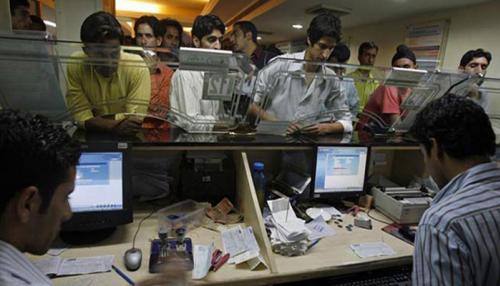- News>
- Companies
Banks may need 20% extra provisioning for 50 top bad debts: Study

The Insolvency and Bankruptcy Code will help in protecting creditor interest in the sense that a start-up firm that gets insolvent can be wound up on a fast-track basis within 90 days.
New Delhi: Banks may require an incremental provisioning of 20 percent against cumulative debt totalling over Rs 4.3 lakh crore of the 50 large bad debts or stressed assets in construction, power, metals, and other sectors, a study released on Thursday said.
This constitutes about half of the gross Non-Performing Assets (NPAs) of the banking sector, the joint study by industry body Associated Chambers of Commerce and Industry of India and rating agency Crisil said.
The study noted that while banks may have already provisioned for a part of these exposures, they need to adequately capitalize to absorb such losses that could fuel credit growth and support the next leg of economic growth.
It also stressed the need to address various challenges such as inter-credit conflicts, ability of large corporates to delay recovery process, burden on National Company Law Tribunal/Debt Recovery Tribunal, roll-out of the ecosystem that includes adequate number of tribunals, insolvency professionals and information utilities, a limited timeline for the formulation of resolutions and access to the secondary market in case of liquidation for successful implementation of the Insolvency and Bankruptcy Code (IBC).
"The success of the code hinges on strengthening its ecosystem, which will help in protecting the interest of stakeholders, instilling financial discipline among borrowers and create a robust platform to attract investors," noted the study titled `IBC- Protecting stakeholders, improving ease of doing business`.
The study said the IBC has brought about a sea change in insolvency resolution towards a creditor-friendly regime, thereby restoring the balance of bargaining power, which was hitherto with the debtors.
The code enhances the rights of a creditor (irrespective of whether it is financial or operational entity) and empowers in identifying bankruptcies and initiate resolution proceedings through an ecosystem that comprises a regulator, insolvency professionals, information utilities, and an insolvency fund.
"Along with the government`s ongoing structural reforms, an effective implementation of the code is expected to improve India`s ease of doing business and global competitiveness rankings significantly, as this is a critical parameter in ranking evaluation," the report said.
It said though the code is expected to face teething troubles before fully taking off, its stakeholders are expected to reap greater benefit in the long run.
Along with banks and Asset Reconstruction Companies (ARCs), the code will benefit corporates, professionals and employees, boost investor confidence, and facilitate deepening of the domestic corporate bond market.
"This will help improve the overall business environment and encourage entrepreneurship and innovation," it said.
Noting that implementation of the bankruptcy framework and engagement with independent credit assessment firms could aid resolutions of stressed assets, the study said: "The strengthening of framework would affect the volume of asset sales as banks are reluctant to take adequate haircuts."
However, it will lead to more cash-based sale of stressed assets which, in turn, would necessitate higher capital. That would benefit larger ARCs.
The Insolvency and Bankruptcy Code will help in protecting creditor interest in the sense that a start-up firm that gets insolvent can be wound up on a fast-track basis within 90 days.
This will not only help entrepreneurs initiate insolvency proceedings voluntarily but the capital can also be reallocated to efficient businesses.
Thus, over time, the code will help promote entrepreneurship and increase the role of professionals from various fields such as law, accountancy, and finance.
On the banking front, the study has suggested for the banks to be more professional and proactive in management, especially in aspects related to the development of early-warning mechanism, astute credit monitoring, proactive commercial decision-making with respect to the way forward and elimination of inter-creditor conflicts.
